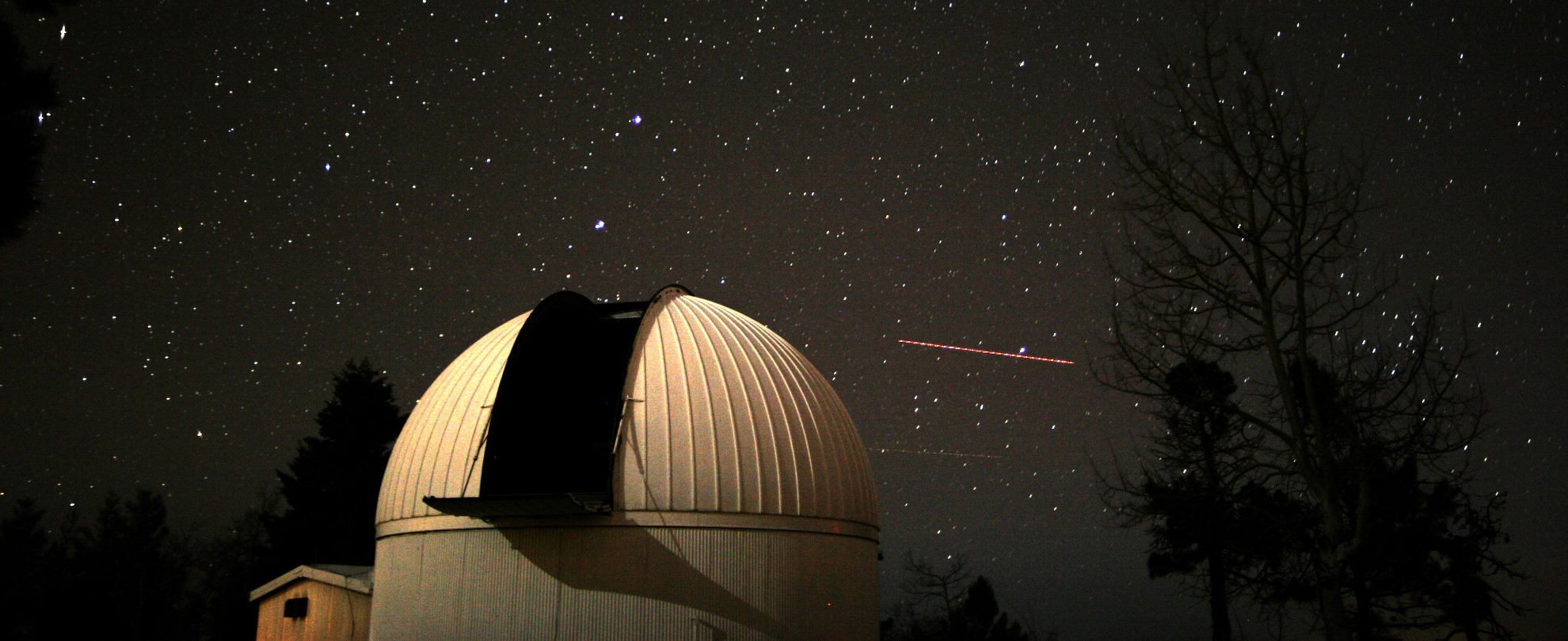You, too, can be an asteroid hunter — thanks to a citizen-science project launched by the University of Arizona’s Lunar and Planetary Laboratory. And you might even get a scientific citation.
The project is enlisting human spotters to verify potential detections of space rocks moving through the field of view of the Catalina Sky Survey’s telescopes. The NASA-funded survey is charged with keeping track of more than a million asteroids, with a principal goal of identifying near-Earth objects that could pose a risk to our planet.
More than 14,400 near-Earth objects, or NEOs, have been discovered by the Catalina Sky Survey during the past 30 years, including 1,200 that were identified just in the past year. That adds up to nearly half of the known NEO population.
The problem is, astronomers know there are still lots of unknown asteroids out there — too many for them to spot without an assist from amateurs. “We take so many images of the sky each night that we cannot possibly look through all of our potential real asteroids,” Carson Fuls, a science engineering specialist for the Catalina Sky Survey, said in a NASA news release. That’s where the Daily Minor Planet can make a difference.
Would-be participants can register on the Zooniverse citizen-science platform, then scan through series of images captured on a nightly basis by the Catalina Sky Survey’s telescopes. The image sets have already been flagged by an automated search program as potentially showing objects moving across the sky. It’s up to the human observers to confirm that the objects are more likely to be asteroids than, say, stars twinkling in the background, or tricks of the eye that fooled the AI. Similar “blinking” techniques led to the discovery of Pluto in 1930.
The Daily Minor Planet harnesses the power of high-resolution astronomy, artificial intelligence and human-powered crowdsourcing to add to the Catalina Sky Survey’s catalog. After going through an asteroid identification tutorial, online observers can turn thumbs-up or thumbs-down on as many image sets as they want to check. The verdicts of multiple observers are averaged to highlight image sets that are the likeliest to deserve a closer look.
“With enough people participating, you can establish a general consensus, so there’s less margin of error,” Catalina Sky Survey director Eric Christensen explained in a news release.
Fuls, who heads up the project, said the Daily Minor Planet is meant to give a lift to the general public as well as to astronomers. “I thought it would be great if people could do what we do every night,” he said. “We see this website as throwing open the doors: Do you want to look for asteroids, too? If so, come on in.”
Near-Earth objects are the quarry that’s most sought after, but because NEOs move across the telescope’s field of view so quickly, identifying them is a tricky task.
“NEOs move so erratically that it’s easy to miss them,” Fuls said. “We try not to filter out false detections too aggressively because this could also filter out some NEOs.”
The project has already yielded results: Three citizen scientists identified 64 possible candidates for unknown asteroids while the online portal was going through its testing phase.
“We’ve sent these detections off to the Minor Planet Center as potential new discoveries, and most of these objects have not yet been linked to any object that has been detected before,” Fuls said. “We anticipate that there will be many more discoveries like that going forward.”
The Daily Minor Planet builds upon previous citizen-science projects focusing on asteroid identification, including two other Zooniverse projects, Hubble Asteroid Hunter and Active Asteroids; Target Asteroids, a program associated with NASA’s OSIRIS-REx mission; the International Astronomical Search Collaboration, which sets up team-based survey campaigns; and Asteroid Data Hunter, a desktop app that was developed by NASA and Planetary Resources. Zooniverse also hosted the Catalina Outer Solar System Survey, a crowdsourced project that looked for trans-Neptunian objects.
If you do sign up to become a measurer for the Daily Minor Planet, make sure you spell your name right when you register. Measurers who contribute to confirmed NEO detections will be acknowledged in the reports submitted to the Minor Planet Center.

